1989 Aston Martin V8 Vantage X-Pack Coupe
Arriving in 1986, the X-Pack was the final and most powerful evolution of the V8 Vantage model, firmly cementing Aston Martin as a member of the exclusive supercar club. We look at the model’s history before driving a recently restored example.
WORDS & PHOTOGRAPHY PAUL WALTON
BEST TILL LAST VANTAGE X-PACK
The final and ultimate version of the AMV8 Vantage was the X-Pack that arrived in 1986. We look at the model’s history and development before driving a recently restored example.
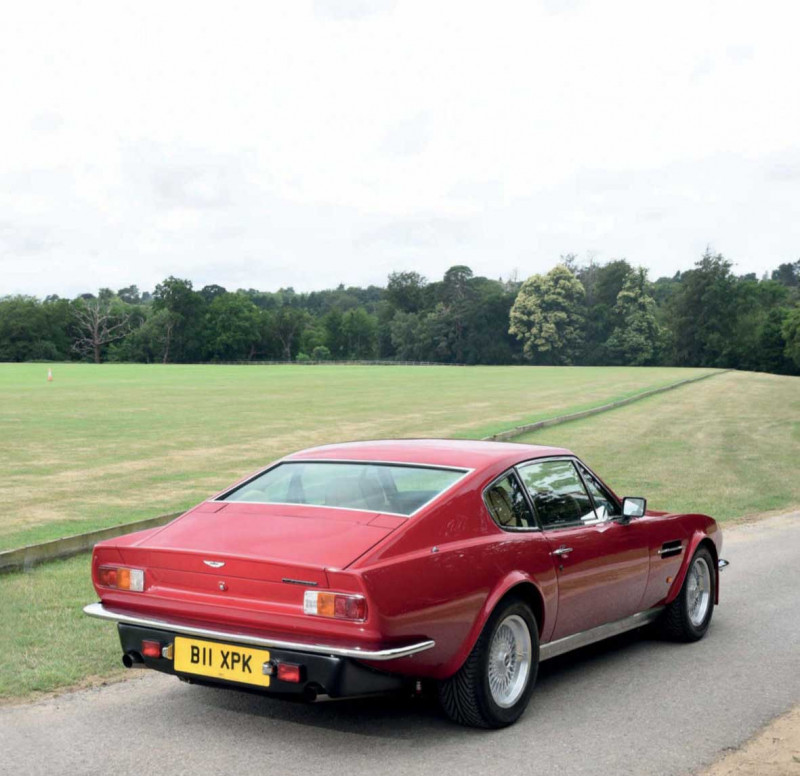
There was no hiding it. For all its power and luxury, by the mid-Eighties the Aston Martin V8 Vantage was starting to show its age. Heavily based on the William Towns-designed DBS that first made its debut in 1967 and still powered by Tadek Marek’s 5.3-litre V8 that had arrived two years later, compared to newer, more modern performance cars such as the Ferrari F40 and Porsche 959, it made the Vantage an antiquated relic from another time.
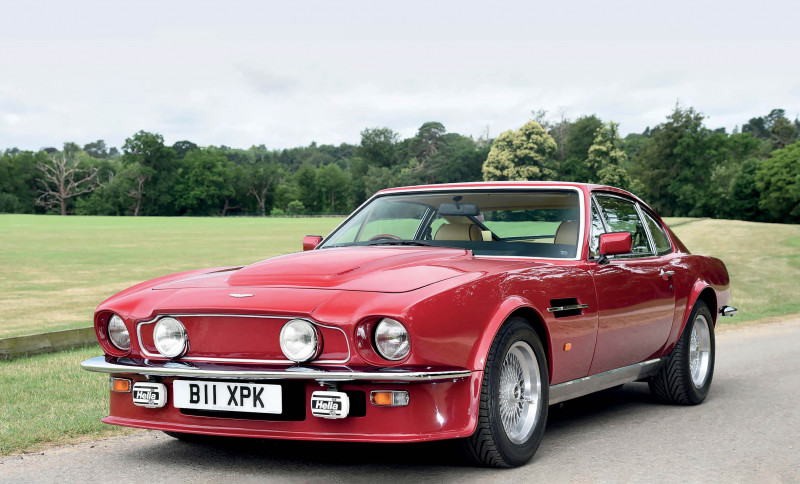
It didn’t help that due to several regulations during that time, the engine had lost considerable power while the car itself was suffering from middle-aged spread. Together, the extra sound deadening, wood trim, extra leather upholstery and a more complicated cooling system had all impacted on the Vantage’s once impressive power-to-weight ratio. With the car’s replacement, the eventual Virage, not due until the end of the decade, Aston Martin needed a way to make the ageing car more desirable.
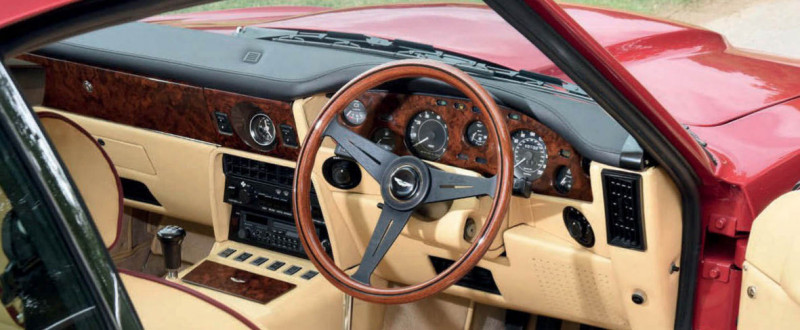
The basis of this was giving the existing 580V generation of V8 a series of updates that would have a considerable impact on the car’s performance.
The origins of these actually go back to 1982 when Aston Martin’s South African distributor approached the factory about a more powerful engine. Apparently one of its customers was tired of being outperformed by Porsche 911 Turbos, although this wasn’t helped by Johannesburg having an altitude of 5,000ft which affected the performance of normally aspirated engines.
Arthur Wilson from Aston Martin’s Engineering Department was responsible for this engine that was later christened the 580X. “We could have called it the South African-spec Vantage,” said Wilson in David Dowsey’s 2007 book, Aston Martin Power, Beauty and Soul, “except that South Africa was politically out of favour at that time. So we thought of another name and called it the 580X.”

The eventual specification included four 48 IDF Weber carbs, higher lift camshafts, modified porting to the cylinder heads and a higher compression ratio which was changed to 10.2:1. The result was around 410bhp, an increase of 40bhp over the previous Vantage engine.
Due to the success of these updates, the 480X was used for the low-volume Zagato model that debuted at the 1986 Geneva Motor Show in March. It was later adopted for an updated Vantage that arrived six months later at the Birmingham Motor Show. The aesthetical changes made to the car were minor and included slightly more flared wheelarches plus new 16in multipiece alloys by Compomotive that could be specified with the centre mesh painted in the same colour as the body. The interior was slightly updated with new switchgear.

Although the De Dion style of axle Aston had used since 1967 remained, to improve handling the car received the same albeit revalved Koni shock absorbers on the front as the Zagato.
Aston never released performance figures for the car, but it’s generally thought it had a 0-60mph time of 5.2 seconds and a top speed of 175mph, making it slightly faster than the previous ‘Oscar India’ generation of V8 Vantage. The press were impressed by the car and its huge amounts of power. “The Vantage is astonishingly fast, especially given the bulk of the machine,” said Autocar in its 1 June 1988 issue. “Torque and acceleration are both thunderous: floor the throttle in gears three, four or five and the Vantage snorts and flies off.”
Yet if 410bhp wasn’t enough, there was an even faster version that with four 50 IDF Weber carburettors produced 437bhp. “We provided an option of modified 48 IDF carburettors bored out to 50mm for the 580X. But it was very much a special job,” continues Wilson in Power, Beauty and Soul. “The carburettors had to be bored by Weber concessionaires at Sunbury-on-Thames; it was a tricky operation. Whether you wrecked the carburettor or not depended on how good the casting was.”
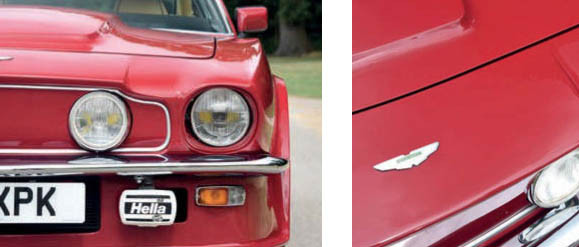
Wilson goes on to say that meeting the emission standards of the time with engines still using carburettors was becoming increasingly difficult, so a version of this engine was only available through Aston’s Service department as an option for Vantage customers.
Due to the engine’s codename, the update was soon called X-Pack by Aston Martin’s Service department, but the name has since come to define the final 1986-1989 era of Vantage in its entirety.
Detailed changes during the car’s lifespan included revisions to the enamel badge, air-conditioning, central locking, door armrests, fuel fillers, stereo system and exterior mirrors. In late 1987 and because of problems with the original Compomotive wheels fitted to the X-Pack, splitting when hitting kerbs, AML initially changed to similar styles by manufacturers OZ Ceres or MSW. They then switched to the similar-looking lattice wheels by Ronal with concealed nuts.
Thanks to the extra power plus its rarity – just 137 Vantages with the 580X engine were built between 1986 and 1989 – and the subtle but effective updates, little wonder the X-Pack is considered by many to be the ultimate version of the V8 Vantage.
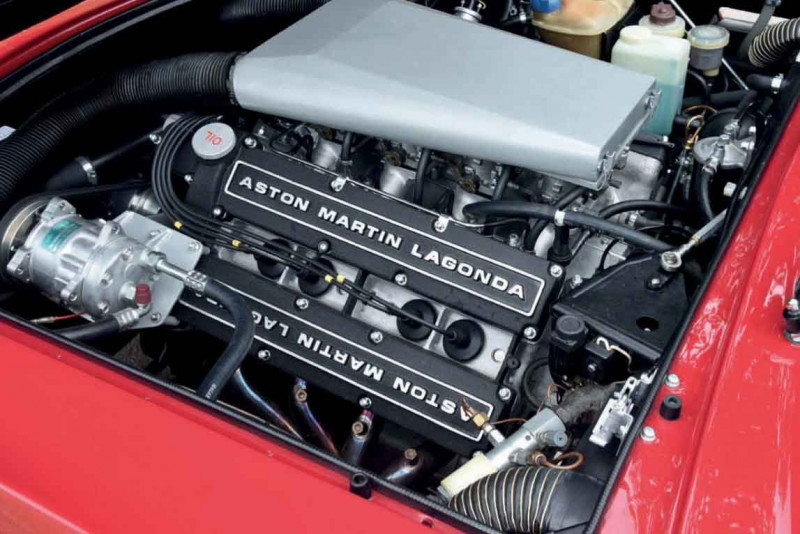
And judging by the beautiful example featured here, I’d fully agree with that view. Although revised several times over the years, the crisp, handsome lines of Towns’ original design are still evident and haven’t been drowned by the over-the-top bodykit fitted to the Vantage Volante. The distinctive Ronal wheels together with the deep air dam beneath the menacing blanked-off grille plus a discreet boot spoiler gives the big Aston an imposing masculinity that European supercars of the time could only dream of.
Registered new on 2 March 1989, just ten months before production came to an end, it was the 30th from last V8 Vantage produced. Bought new for £89,139 (that included almost £1,000 of extras) from Aston Martin’s official Edinburgh dealer, Murray Motor Company, the car was originally in the darker shade of Suffolk Red. Judging by the many receipts that still exist, they reveal it was clearly loved, and the first owner kept the car until 2012 when it was sold via Aston Martin’s Works Service department in Newport Pagnell for £129,000 to a collector in Kuwait. The car was barely used during its time in the Middle East and it arrived back in the UK eight years later when it was bought by respected Aston Martin specialist, RS Williams. By now, looking tired, the specialist started a full restoration, stripping the car and repainting the shell in the brighter York Red.

It was still as a bare shell when the car caught the eye of lifelong Aston Martin enthusiast Bryan Webb after he’d taken his PoW Volante – one of the famous Hunter Green cars, a collection of nine different models built to the same specification – to the Cobham-based experts to have the carburettors set up.
“I never thought the Volante’s chassis was strong enough for the power,” he admits. “When you put the roof up, it creaked all day long. It was horrible. Yet the X-Pack had always been a poster car for me so when I was offered this one, I agreed to part exchange the Hunter Green for it.”
Part of the appeal for him was the fact that it would be built to his specification. “The thought of having a brand-new one just appealed to me, to have that feeling of what it would have been like to have bought it new from the factory. And this car gives that impression; there isn’t a rumble, a rattle or a squeak.” After Bryan kindly offers me a drive and I get comfortable behind the steering wheel, it clearly looks and feels like a brand-new car, my nostrils filled with the rich, perfumed aroma of the thick Connolly leather that was trimmed by Aston Martin Works. This, together with the acres of veneer across the dashboard, make the car look and feel much more luxurious compared to the other supercars of the period. While the racing-inspired F40, for example, offers less creature comforts than a budget motel, the Vantage has all the formality of the Royal Suite at Claridge’s.
“Aston Martin designers have had it drilled into them that plastic is bad,” continued Autocar in its 1988 issue. “Their PVC phobia has resulted in a cloying aroma of Connolly hide wafting among fingerprint whorls of walnut veneer while the door treads on the Vantage are burnished, easy-scratch stainless steel.” Despite effectively starting with a blank canvas, Bryan decided to keep the car standard rather than modernise it. “The only things I’ve changed are giving the dials LEDs so I can read them at night plus an LED pack for the headlights.”
The deep, reverberating growl the engine produces when it fires is more of a juxtaposition with the traditional interior than a modern Bluetooth speaker would be housed in a walnut cabinet. Although the Vantage was officially available with Chrysler’s Torquefl ite three-speed automatic transmission for the first time from 1987 onwards, this model has the ZF-sourced fi ve-speed manual that slots smoothly and easily into position. Thanks to a light and progressive clutch, the car is easier to get rolling than I was expecting and together with the nicely assisted steering is pleasant to drive.
Then I reach a long, straight road. With nothing ahead of me but empty tarmac, I depress the clutch, cleanly snick the ‘box down to third and squeeze the throttle. Despite the Vantage tipping the scales at a hefty 1,818kg when a Ferrari F40 is 1,245kg, with the recently rebuilt V8 currently producing over 420bhp, the resultant acceleration is still as instant as it is hard. It also never ends; after quickly changing up to fourth and then fifth, the power never relents, never gives up, never ends. It feels like I’ll run out of road before the car runs out of power. And during all of this, the cabin is filled with a deep, meaty growl that sounds as if I have Louis Armstrong in carpet-lined boot.
And that power is always available, no matter the gear. Accelerate hard in fourth or fifth and it will still pick up speed quicker than most cars do in first and second. The minor aesthetical updates would have had little impact on making the Vantage look and feel more modern, but on a performance level at least, the X-Pack would have kept the car on a par with those newer supercars.
As mentioned earlier, the Vantage is no featherweight, its bulk and size always keenly felt through the bends. Yet although it clearly lacks the directness of the racing-developed F40, for example, the slightly stiff er suspension derived from that of the Zagato results in a composure the earlier models lack but without compromising its suppleness. Thanks to accurate and nicely weighted steering, it can be treated as a half decent, if heavy, sports car.
Yet where the big Aston really excels is as a grand tourer. With perfectly spaced ratios between each gear together with its comfortable interior and the V8’s endless mile-munching power, it might be close to four decades old, but I couldn’t think of a better car for crossing the continent with than an X-Pack era of Vantage.
The car the Vantage was based on might have been almost 20 years old when the X-Pack arrived in 1986, but in terms of its looks, luxury interior and monstrous performance, Aston Martin really did save the best till last.
Thanks to: The car’s owner, Bryan Webb
‘Aston never released performance figures for the car, but it’s generally thought it had a 0-60mph time of 5.2 seconds and a top speed of 175mph’


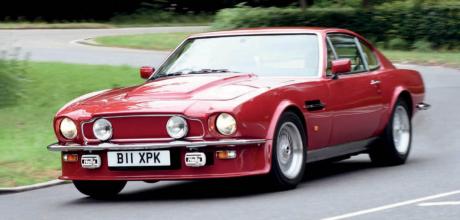
Different impressions
As a schoolboy I bought Motor or Autocar most weeks from the mid-Sixties to the early Seventies, carefully removing the road tests, which I still have. It’s fascinating to compare your and your readers’ impressions of classics with those of contemporary road-testers. With the Aston DBS V8, reader Jim Pace noted the heavy clutch, and that the car ‘churns away on the starter’ before firing, and commented that some areas of the interior were crude. In July 1971 Autocar noted a 50lb effort needed for the clutch and 45 seconds of churning to start the engine. That they made no comment about the crudeness of the switchgear says much about how such things have improved over the years. In the Autocar March 1968 test of the Jensen FF, its four-wheel drive and ABS system made the car remarkably advanced. On paper it’s surprisingly similar to my Bentley Continental GT. I’d love to compare the two side by side!